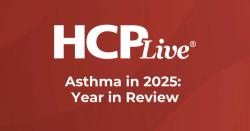
OR WAIT null SECS
Omalizumab Improves Sleep Outcomes with Nasal Polyposis Over 76 Weeks
A pooled analysis of sleep disturbance-related outcomes showed the IgE inhibitor significantly benefits a burdensome symptom of CRSwNP.
Omalizumab (Xolair) benefitted sleep disturbance among patients with nasal polyposis over a span of 76 weeks, according to new data presented at the American Academy of Allergy, Asthma & Immunology (AAAAI) 2021 Virtual Sessions this week.
The research, supported by Novartis Pharmaceuticals and led by Eli O. Meltzer, MD, of the University of California, San Diego, assessed outcomes from the POLYP 1 and POLYP 2 trials which observed the monoclonal antibody plus background corticosteroids versus placebo in randomized patients with chronic rhinosinusitis with nasal polyps (CRSwNP) through 24 weeks.
The assessment also included outcomes from an open-label extension which observed the 126 placebo arm patients switched to omalizumab, while the 123 patients in the treatment arm continued therapy through week 52, then discontinued care through week 76.
Meltzer and colleagues gauged the therapy’s efficacy through the Medical Outcomes Study (MOS) Sleep Space, as well as the sleep subdomain of the Sino-Nasal Outcome Test-22 (SNOT-22), which included 8 of the 22 questionnaire prompts that examine patients’ sleep.
As an immunoglobulin E (IgE) inhibitor, omalizumab has shown a clinical history of benefit in patients with CRSwNP, including in original outcomes from POLYP 1 and 2. However, its value for sleep disturbance—a key symptom in nasal polyposis—remains ill-defined.
Mean patient age in the treatment arm was 49.9 years old, and 51.6 in the placebo arm. A majority of total patients were male (64.3%), asthmatic (57.0%), and had previous sinonasal surgery (59.0%).
In the pooled trials, investigators observed SNOT-22 sleep subdomain improvements at a significant rate for patients treated with omalizumab versus placebo through week 24. At that mark, through week 52 in the OLE, patients switched from placebo to treatment reported rapid improvement in SNOT-22 sleep subdomains, while patients continued on omalizumab continued to improve through week 52.
From week 52 to week 76 (while discontinued), SNOT-22 sleep subdomain improvements remained improved from baseline, but waned in progression noted in treatment weeks.
“Mean improvements in MOS from Weeks24–52 were observed in sleep disturbance, snoring, sleep adequacy, and Sleep Problems Index I/II, with the greatest improvements in shortness of breath,” investigators wrote. “Minimal to no improvements were observed insomnolence and sleep quantity.”
Overall, safety findings from POLYP 1 and 2, as well as the OLE, were consistent with previously-reported data from the same population.
Meltzer and colleagues concluded the collective findings, showing benefit of omalizumab in sleep-related outcomes in SNOT-22 and MOS Sleep Scale metrics across year-long and extended discontinued therapy assessment, suggest the biologic is valuable beyond rhinological symptoms in patients with CRSwNP.
“The present study suggests that omalizumab offers benefit for sleep disturbance for nasal polyposis, which is one of the most bothersome patient-reported symptoms of the disease,” investigators wrote.
The study, “The Impact of Omalizumab Therapy on Sleep in Patients With Nasal Polyps,” was presented at AAAAI 2021.


